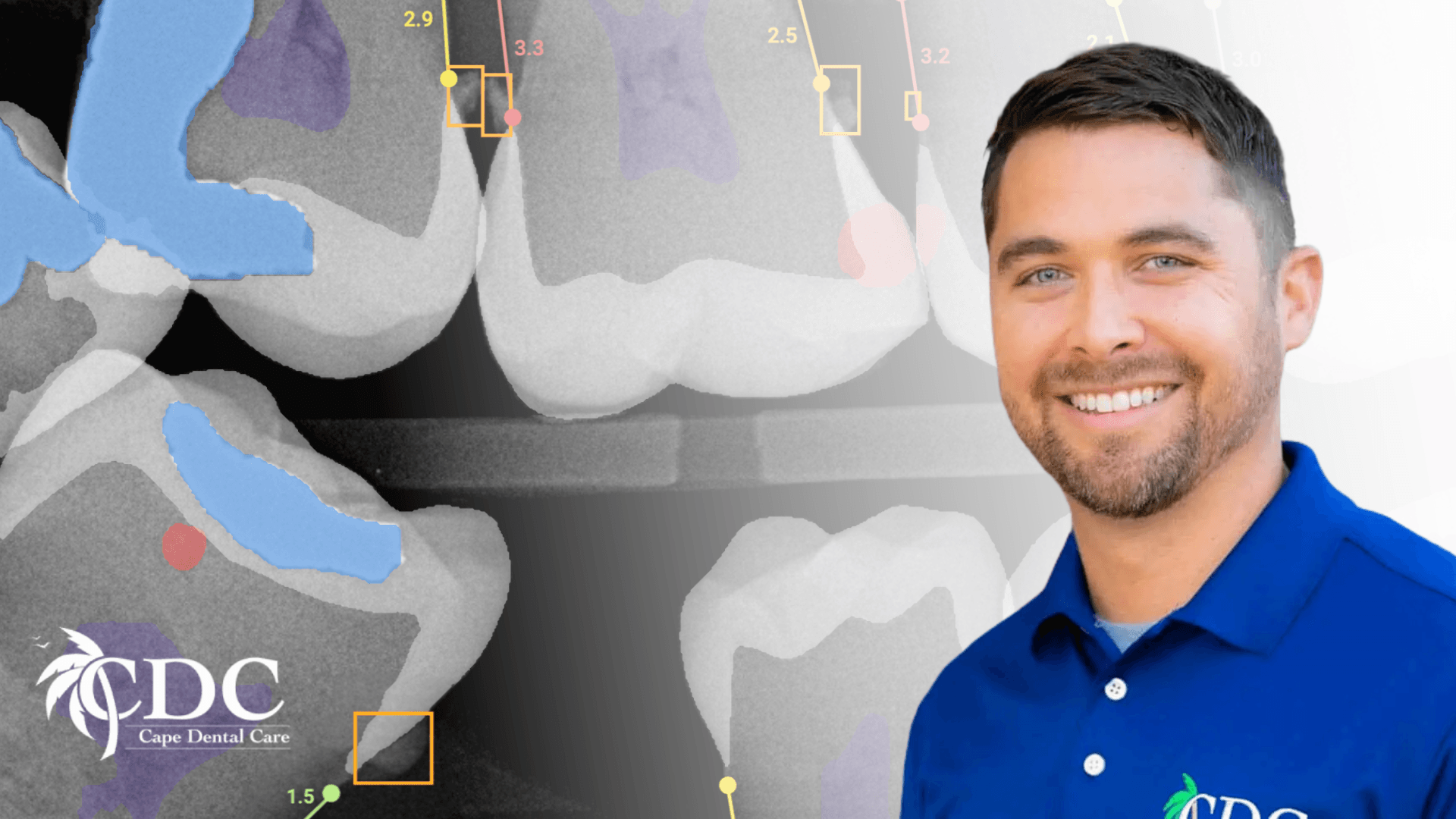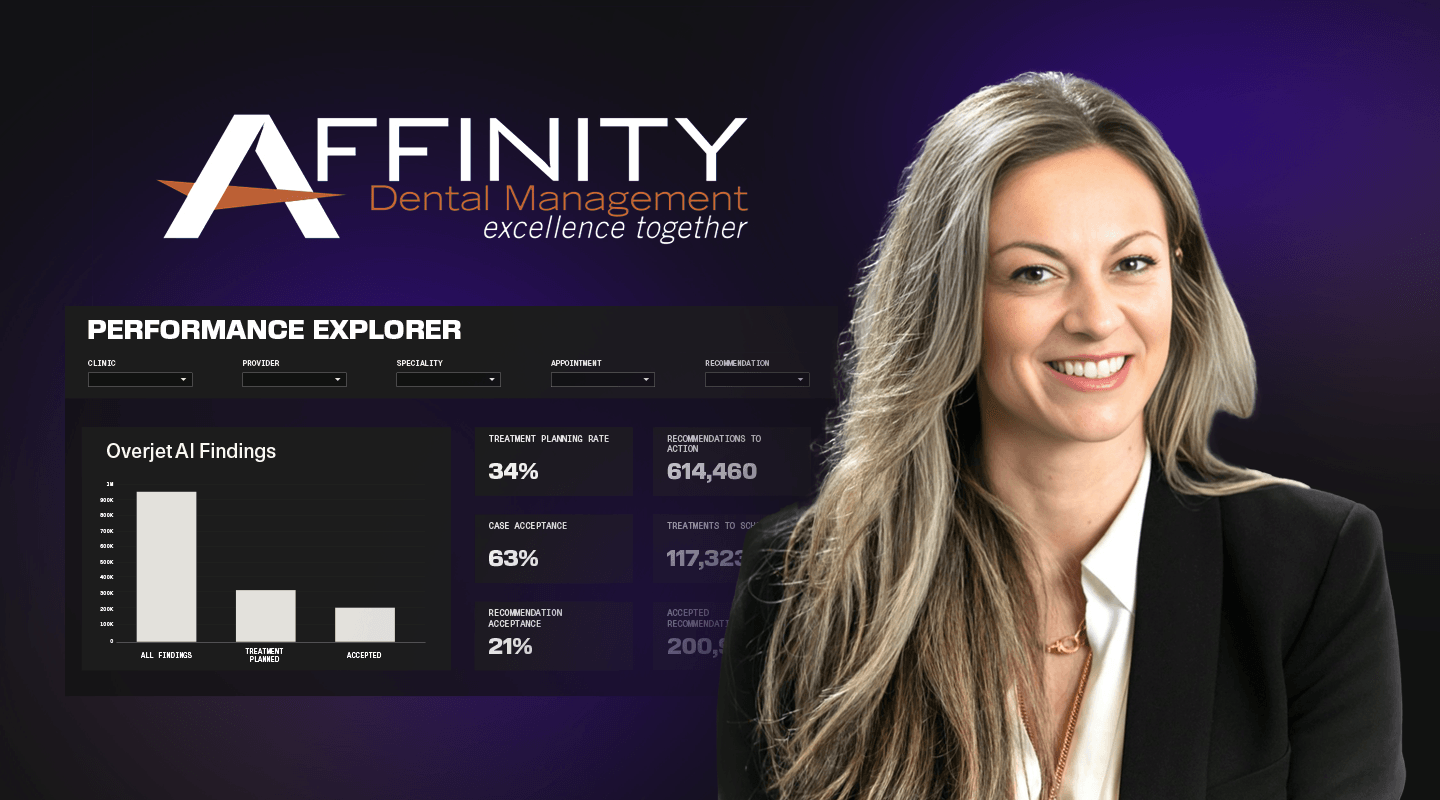When Dr. Brandon Ryff, the owner of Scottsdale Smile Center, decided to investigate adding dental AI to his practice, he knew it needed to be a good culture fit.
The private practice has four dentists — including two that were previous owners — and four hygienists. It’s been serving the Scottsdale, Arizona community for 40 years, and has developed a reputation for excellent patient care, backed by best-in-class technology.
In the 11 years since Dr. Ryff began practicing, he's led a digital transformation.
“The movement is toward digitizing what we do, whether it be X-rays, electronic health records, scanning, and now artificial intelligence. It’s about transforming traditional workflows to digital workflows to improve outcomes, predictability, and help us deliver high-quality dentistry on a daily basis,” said Dr. Ryff.
“Patients trust us to keep them healthy. AI helps us be accurate in our assessment,” he explained.
Identifying the Need for Dental AI
“There’s a saying that you never want to be the first or the last person to adopt a new technology,” laughed Dr. Ryff. “I was aware that AI was coming into dentistry and was excited about it, but hesitant. Our patients aren’t test subjects. The problem was that I could see decay clinically, but didn’t see it on the digital X-ray. With the AI, it draws your attention to the area, and then the dentist uses their training to evaluate that piece of information and determine if it’s appropriate to move forward with treatment.”
Clinical accuracy was the first priority. The second reason for implementing AI radiograph analysis was to support the doctors’ philosophy of preventive dentistry.
“If there’s something that we can spot earlier that makes treatment less invasive, cheaper, and easier to fix, we want to do that,” explained Dr. Ryff.
Overjet’s AI platform is FDA-cleared to detect and outline decay as well as quantify bone level measurements, which can be used to help diagnose gum disease.
“The response has been overwhelmingly positive. This has blown people away."
Overjet color-codes the findings, which draws the eye to the areas that need a closer look. That helps both providers and patients interpret the radiographs.
“What I’ve seen clinically is a reduction in false negatives,” said Dr. Ryff. “Nobody likes surprises and this helps us with accurate diagnosis.”
Enhancing Patient Communication with Dental AI
Most patients don’t know how to read traditional black-and-white X-rays, and it can be hard for them to understand what’s happening in their mouths.
With Overjet’s annotated X-rays, the team at Scottsdale Smile Center has a powerful patient education tool.
“This has changed the way we present treatment,” said Dr. Ryff. “Instead of just telling them what I see, this shows them what is happening in their mouth. It improves the patients’ understanding and makes them more comfortable asking questions and having a conversation about their health. I can even pull up radiographs from past visits and compare with the new radiographs to determine if there are any changes.
“The response has been overwhelmingly positive – much more enthusiasm than I imagined,” said Dr. Ryff. “This has blown people away. I’ve had countless patients thank me for investing in this technology to help keep them healthy.”



